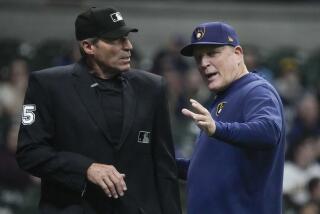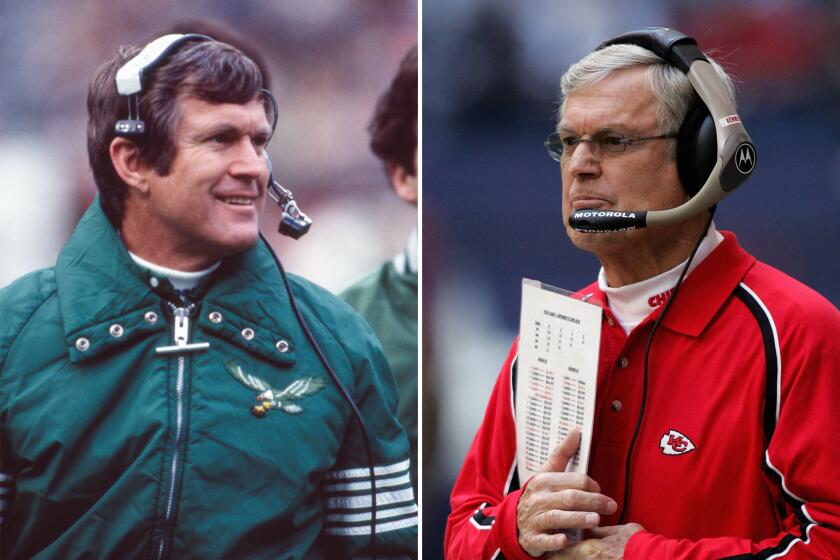Umpires Win Battle Over Monitoring of Pitch Counts
- Share via
The simmering dispute over baseball’s attempt to use pitch counts in evaluating how umpires apply the strike zone ended Wednesday without reaching a full count.
The commissioner’s office said it would no longer use pitch counts as a yardstick, and the umpires’ union responded by dropping a grievance in which it claimed that pitch counts threatened the integrity of the game and violated the bargaining agreement with the umpires.
Rob Manfred, baseball’s executive vice president for labor relations, notified the umpires’ union by letter that pitch counts would no longer be used to evaluate performance.
“It was settled with us getting exactly 100% of what we requested,” union lawyer Larry Gibson said, adding in a letter to Manfred that “major league umpires will continue to call balls and strikes with professionalism and absolute neutrality to each pitch.”
Sources said that the commissioner’s office still believes it has the right to use pitch counts as a tool in evaluating how umpires apply the strike zone but did not want to see the controversy take away from the second half of the season.
Sandy Alderson, the executive vice president for baseball operations, had notified about a dozen of the 80-plus umpires by letter and e-mail recently that they needed to “hunt for strikes” on the low, inside and high margins of the rule-book zone and that their high pitch counts over a large sampling of games indicated their strike zone was too small.
He insisted in subsequent interviews that he didn’t set a pitch quota and wasn’t asking the umpires to call strikes simply to call strikes but that pitch counts, along with videotape, digital tracking and personal observation by umpiring supervisors, was a legitimate tool in the attempt to have the rule-book strike zone uniformly applied.
Alderson reiterated Wednesday that he felt the umpires overreacted.
“I would characterize this as a misinterpretation on their part which led to the filing of a grievance in absence of private dialogue,” he said.
However, several labor and baseball officials said they thought that Alderson mishandled the situation by failing to contact the involved umpires personally rather than through e-mail. They also said the pitch-count formula and “hunt for strikes” tone did raise the question of integrity and overburdened the umpires at a time when many are trying to break old habits and conform to the rule-book zone and that the decision to drop pitch counts was a direct slap at Alderson.
“The incident is over as far as I’m concerned,” Alderson said. “I am not interested in prolonging or furthering it with any analysis. I think it’s important that we put it behind us and go forward.”
More to Read
Go beyond the scoreboard
Get the latest on L.A.'s teams in the daily Sports Report newsletter.
You may occasionally receive promotional content from the Los Angeles Times.










